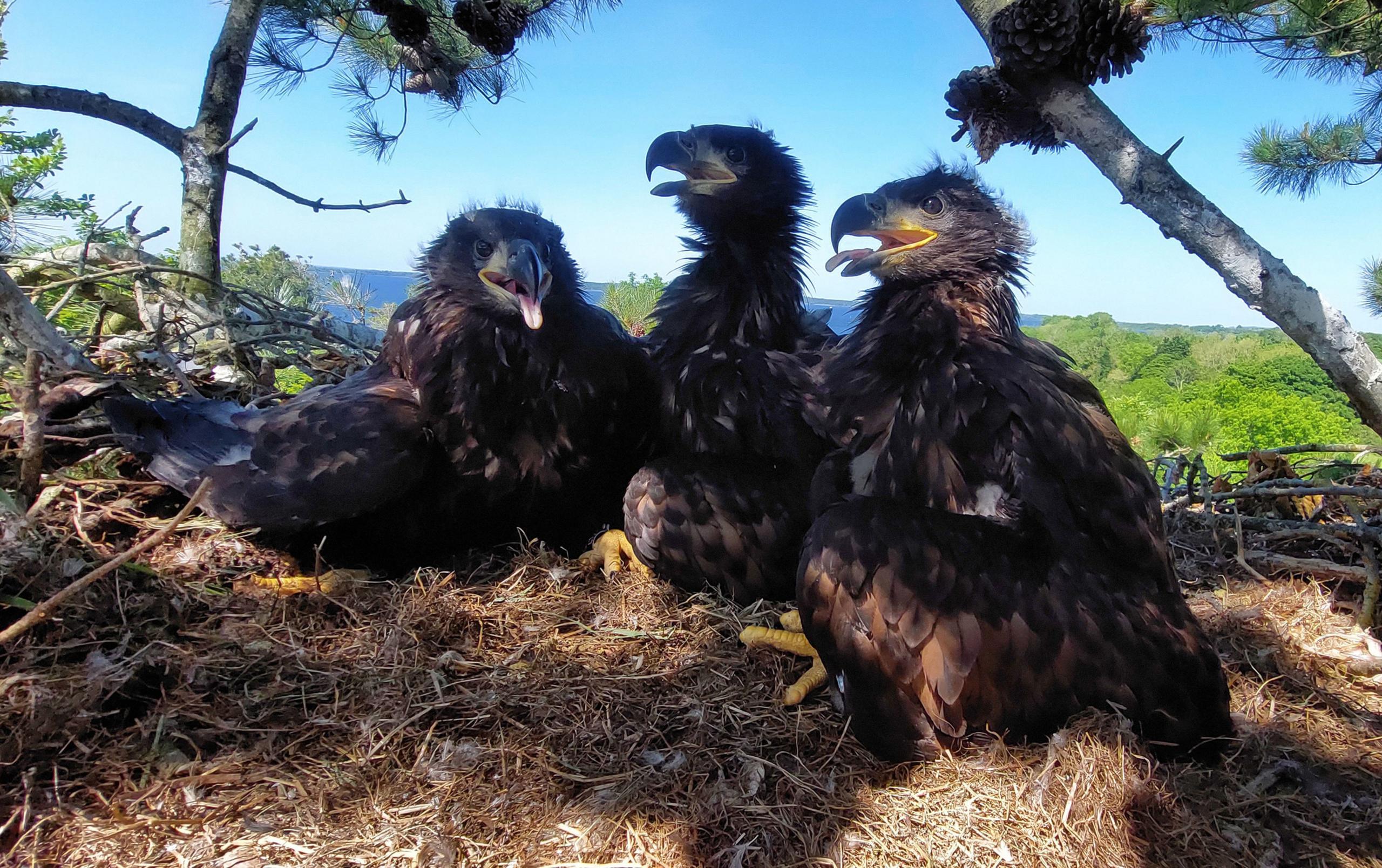New chicks as 'widowed' Irish eagle finds a partner

White-tailed eagles are one of Ireland's largest and rarest birds of prey
- Published
After four years flying solo a widowed white-tailed eagle and his new partner have produced two chicks, Irish conservationists have said.
It seems love is in the air once again for the male eagle, whose previous partner died of bird flu in 2018.
The new pair set up a territory together in February, building a nest on the County Clare shores of Lough Derg.
White-tailed eagles are one of Ireland's largest and rarest birds of prey, sometimes known as "flying barn doors" due to their wingspan of more than 2m (6ft).
The male eagle was first released in Killarney National Park, County Kerry, in 2008.
His partner, which came from Norway, was released in the Lough Derg area in 2020 alongside 15 other white-tailed eagle chicks.
Despite initially flying to Scotland, she returned six months later and eventually bonded with the older male, who was now single.
A new family
An Irish National Parks and Wildlife Service (NPWS) white-tailed eagle reintroduction project, which aims to bring the species back to Ireland, has been monitoring the birds for years.
Its leader, Eamonn Meskell, said the new chicks were significant to the project.
"But we're also delighted to see this eagle that we know well make a new bond and start a new family," he added.
"A story like this really brings our reintroduction programme to life, as it helps people to learn about eagle breeding behaviour and the fragility of our reintroduction efforts."

The white-tailed eagle became extinct in the UK and Ireland in the 1900s
In 2013 the male eagle and his previous partner fledged a pair of chicks - the first hatching of a white-tailed eagle in Ireland in more than 110 years.
The pair fledged chicks for the next four years until the female died.
Eagle-eyed NPWS staff also tagged three other white-tailed eagle chicks in recent days, reared by one of the male eagle's offspring from its previous partner.
The white-tailed eagle, also known as the sea eagle, became extinct in the UK and Ireland in the 1900s.
The species only returned following a reintroduction project in the west of Scotland, which began in 1975.